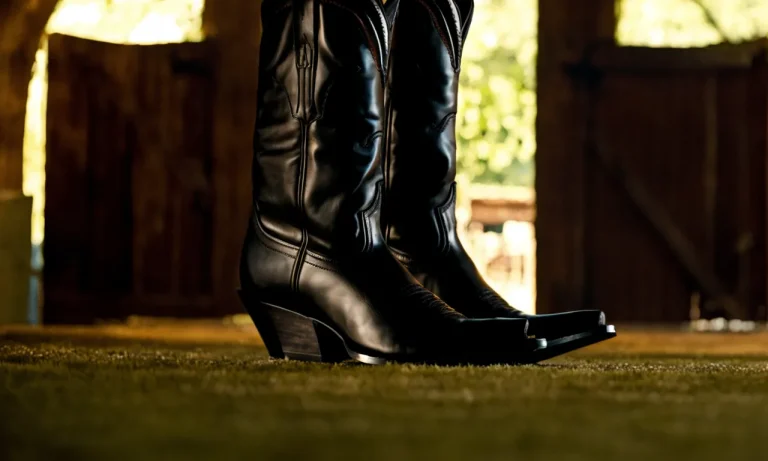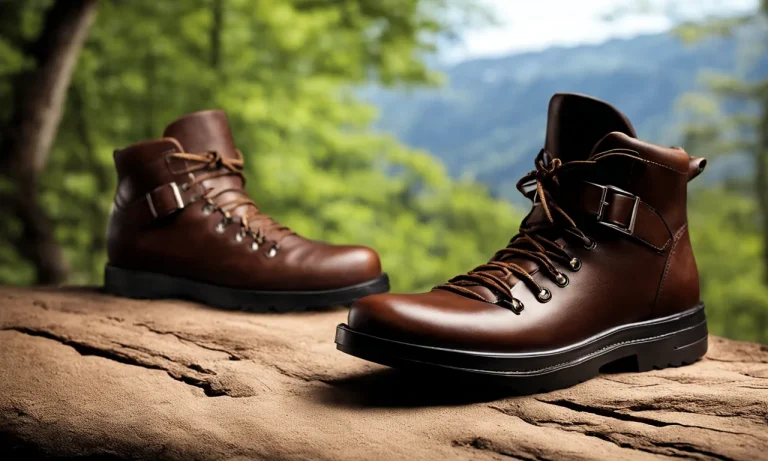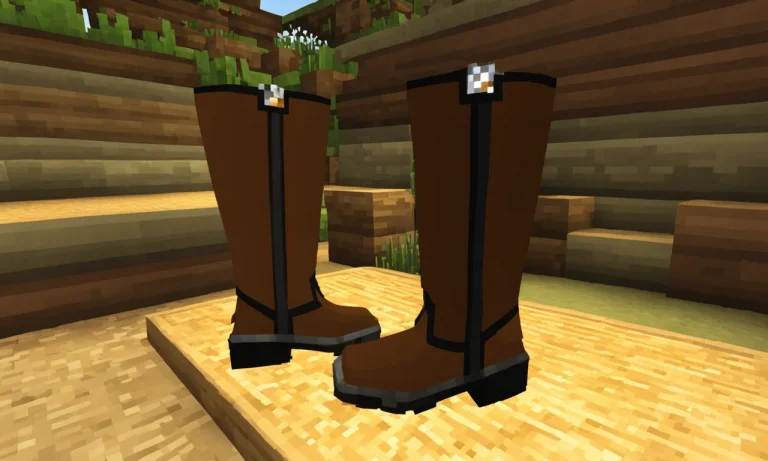Boots have long been a popular footwear choice for their durability, traction, and protective qualities. But with so many styles and materials available, many wonder – are boots actually good for your feet?
If you’re short on time, here’s a quick answer to your question: Wearing the right boots for your needs and foot type, sized correctly, can provide important foot support and protection. But ill-fitting or inflexible boots can potentially cause pain or damage if worn too often or for too long.
In this comprehensive guide, we’ll explore the pros and cons of boot-wearing for foot health. We’ll look at factors like materials, fit, break-in periods, and foot conditions that may be helped or exacerbated by boots.
We’ll also provide tips for choosing the healthiest boots for your unique feet and lifestyle needs.
Key Benefits of Wearing Boots for Your Feet
Support
One of the key benefits of wearing boots is the support they provide for your feet. Unlike many other types of footwear, boots are designed to provide maximum support to your feet, ankles, and lower legs.
This support is especially important for those who engage in physically demanding activities or spend long hours on their feet. Boots with proper arch support can help alleviate foot and leg pain, reduce the risk of injuries, and provide stability and balance.
According to the American Podiatric Medical Association, wearing supportive footwear like boots can help prevent common foot problems such as plantar fasciitis and Achilles tendonitis. The cushioning and stability offered by boots can also reduce the impact on your joints, making them a great choice for individuals with conditions like arthritis or flat feet.
Protection
Another major benefit of wearing boots is the protection they offer for your feet. Boots are typically made from durable materials that provide a barrier between your feet and the elements. Whether it’s rain, snow, or uneven terrain, boots can shield your feet from getting wet, cold, or injured.
Additionally, boots with reinforced toe caps or steel toes can protect your feet from heavy objects or accidental impacts, making them an essential choice for workers in construction, manufacturing, or other hazardous environments.
According to a study published in the Journal of Occupational and Environmental Medicine, workers who wore boots had a significantly lower risk of foot injuries compared to those who wore other types of footwear.
This emphasizes the importance of wearing boots for foot protection, particularly in high-risk occupations.
Traction
Boots are known for their superior traction, which is especially beneficial in slippery or uneven surfaces. The outsoles of boots are often designed with deep treads or patterns that provide excellent grip, reducing the risk of slips and falls.
This is particularly advantageous in outdoor activities like hiking, trekking, or working in rugged terrains.
Studies have shown that boots with good traction can significantly enhance stability and prevent accidents. In fact, a research conducted by the National Institute for Occupational Safety and Health found that workers who wore boots with slip-resistant soles had a 60% reduction in slip-related injuries.
Potential Downsides of Boots for Foot Health
Inflexibility
One of the potential downsides of wearing boots is their lack of flexibility. Unlike other types of footwear, boots often have a sturdy and rigid construction, which can restrict the natural movement of the feet.
This lack of flexibility can lead to discomfort and foot fatigue, especially if you are on your feet for extended periods of time. It’s important to choose boots that have some level of flexibility to ensure optimal foot comfort.
Moisture Buildup
Another drawback of wearing boots is the potential for moisture buildup. Boots, particularly those made of materials like leather, can trap moisture inside, leading to sweaty and damp feet. This can create an ideal environment for bacterial and fungal growth, increasing the risk of foot infections.
To mitigate this issue, it is essential to wear moisture-wicking socks and choose boots that offer breathability to allow air circulation.
Weight
Boots are generally heavier than other types of footwear, which can put additional strain on the feet and legs. The weight of the boots can make walking and standing for long periods more tiring and uncomfortable.
If you have existing foot or leg conditions, such as arthritis or plantar fasciitis, the added weight of boots may exacerbate your symptoms. It’s important to consider the weight of the boots when selecting a pair to ensure they are suitable for your needs.
Break-In Period
One aspect of wearing boots that can be problematic for foot health is the break-in period. Many boots, especially those made of durable materials like leather, require a period of time to soften and conform to the shape of your feet.
During this break-in period, blisters, calluses, and discomfort can occur. It’s crucial to gradually wear the boots and allow your feet to adjust to them to minimize the risk of foot issues.
While boots can offer protection and style, it’s important to be aware of these potential downsides to foot health. By choosing boots that prioritize flexibility, breathability, and a proper fit, you can mitigate some of these concerns.
Remember to consult with a podiatrist or footwear specialist if you have any specific foot conditions or concerns.
Choosing the Best Boots for Your Feet
Consider Intended Use
When choosing the best boots for your feet, it’s important to consider the intended use. Are you planning to wear them for hiking, work, or just everyday wear? Different activities require different types of boots.
For example, if you’re planning to hike through rough terrains, you’ll need boots with good ankle support and sturdy soles. On the other hand, if you’re looking for boots to wear to work, you might prioritize comfort and slip resistance.
Pick the Right Materials
The materials used in boots can greatly impact their comfort, durability, and performance. Leather is a popular choice for its durability and ability to mold to the shape of your feet over time. Synthetic materials like nylon and polyester are lightweight and offer good breathability.
Some boots also come with waterproof membranes or insulation to protect your feet in wet or cold conditions. It’s important to choose materials that suit your needs and preferences.
Get the Right Fit
One of the most crucial factors in choosing the best boots for your feet is getting the right fit. Ill-fitting boots can cause discomfort, blisters, and even foot problems in the long run. Take accurate measurements of your feet and refer to the sizing charts provided by the manufacturer.
It’s also a good idea to try on the boots and walk around in them to ensure they feel comfortable and provide enough room for your toes to wiggle.
Allow for a Break-In Period
Even the best-fitting boots may require a break-in period for your feet to adjust to them. It’s normal for new boots to feel stiff and slightly uncomfortable at first. To avoid discomfort and potential blisters, gradually increase the time you spend wearing them.
Wear them around the house or on short walks before taking them on longer adventures. This will give the boots a chance to mold to the shape of your feet and become more comfortable over time.
Care for Your Boots Properly
To ensure the longevity of your boots and keep them in good condition, it’s important to care for them properly. Regularly clean them to remove dirt and debris that can cause damage. Use appropriate products to condition and moisturize leather boots, and apply waterproofing treatments if necessary.
Store your boots in a cool, dry place away from direct sunlight to prevent them from deteriorating. Taking these steps will not only keep your boots looking great but also ensure they continue to provide optimal support and comfort for your feet.
Boots for Common Foot Conditions
Plantar Fasciitis
Plantar Fasciitis is a common foot condition that causes pain in the heel and bottom of the foot. If you suffer from this condition, finding the right boots is essential for proper support and comfort. Look for boots with good arch support and cushioning in the heel area.
Boots with a removable insole are also beneficial as they allow you to insert custom orthotics if needed. Additionally, boots with a rocker sole can help alleviate some of the pressure on the plantar fascia.
Flat Feet
Flat feet, or fallen arches, can cause foot pain and discomfort. When choosing boots for flat feet, opt for those with built-in arch support to provide stability and reduce strain on the arches. Look for boots with a firm midsole to prevent overpronation, which is a common issue for individuals with flat feet.
Additionally, boots with a wide toe box can provide extra room for the toes, preventing any discomfort or rubbing.
High Arches
High arches can lead to instability and foot pain. When selecting boots for high arches, look for options with cushioning in the arch area to provide support and absorb shock. Boots with a contoured footbed can also help distribute weight evenly and reduce pressure on the arches.
Additionally, boots with a flexible sole can aid in natural foot movement and prevent excessive strain on the arches.
Bunions
Bunions are a common foot condition characterized by a bony bump that develops at the base of the big toe. For individuals with bunions, finding boots with a wide toe box is crucial to accommodate the protrusion and prevent any rubbing or discomfort.
Look for boots made from flexible materials that can adapt to the shape of the foot and provide ample space for the toes. Boots with adjustable closures, such as laces or velcro straps, can also be beneficial in achieving a comfortable fit.
Wide Feet
Individuals with wide feet often struggle to find boots that offer a comfortable fit. When shopping for boots for wide feet, look for brands that specialize in wide-width options. These boots are designed to provide extra room in the toe box and throughout the shoe, accommodating wider feet without sacrificing style or support.
Additionally, boots with adjustable closures can be helpful in achieving a customized fit.
Narrow Feet
On the other hand, individuals with narrow feet may find it challenging to find boots that don’t feel too loose or wide. Look for boots with a narrow or slim fit option, as these are designed specifically for narrower feet.
Boots with laces or buckles can also help adjust the fit to prevent any slipping or discomfort. Consider trying on different brands and styles to find the perfect fit for your narrow feet.
Diabetes
For individuals with diabetes, proper foot care is crucial to prevent complications. When choosing boots, opt for those with a wide toe box and a soft, seamless interior to minimize rubbing and irritation.
Boots made from breathable materials can help prevent excessive sweating and reduce the risk of fungal infections. Additionally, boots with a cushioned sole and shock-absorbing properties can protect the feet from pressure points and provide extra comfort.
Frequently Asked Questions
Are cowboy boots bad for your feet?
Cowboy boots have been a staple of western fashion for centuries, but many people wonder if they are detrimental to foot health. The answer to this question is not a simple yes or no. It depends on various factors such as the fit of the boots and how they are worn.
Ill-fitting cowboy boots can cause discomfort and potentially lead to foot problems such as corns, calluses, and bunions. However, if cowboy boots are properly fitted and provide adequate support, they can be worn without causing harm to your feet.
It is important to choose the right size and style for your feet and consider getting professional advice if necessary.
Do boots help plantar fasciitis?
Plantar fasciitis is a common condition that causes heel pain. Many people wonder if wearing boots can provide relief for this condition. While boots alone may not cure plantar fasciitis, they can provide support and stability to the foot, which can help alleviate some of the symptoms.
Boots with good arch support and cushioning in the heel area can help reduce the strain on the plantar fascia, the band of tissue that connects the heel bone to the toes. It is important to choose boots that fit well and provide proper support for your specific needs.
Additionally, it is recommended to consult with a healthcare professional for a comprehensive treatment plan for plantar fasciitis.
Should you wear boots all day?
Whether or not you should wear boots all day depends on various factors, including the type of boots, your daily activities, and your individual foot health. Some boots are designed for all-day wear and provide the necessary support and cushioning for prolonged use.
However, other boots may not be suitable for extended periods of wear, especially if they lack proper arch support or cushioning. It is important to listen to your body and pay attention to any discomfort or pain that may arise from wearing boots all day.
If you experience any discomfort, it is advisable to give your feet a break and switch to more comfortable footwear. Additionally, it is recommended to alternate between different types of shoes to give your feet a chance to rest and recover.
Conclusion
While boots can provide important benefits like support, protection, and traction, they can also pose risks to foot health if not properly fitted and cared for. Pay attention to your individual foot needs and potential problem areas when selecting boots.
The right boots, worn in moderation and allowed to properly break-in, can be an excellent footwear choice. But continuously wearing overly rigid, tight, or heavy boots can lead to pain and damage over time. Make sure to rotate boot-wearing with more flexible, lightweight options.
By choosing boots tailored for your foot type and intended activity, while providing your feet periods of free movement, boots can safely enhance your comfort and performance without harming your foot health.






